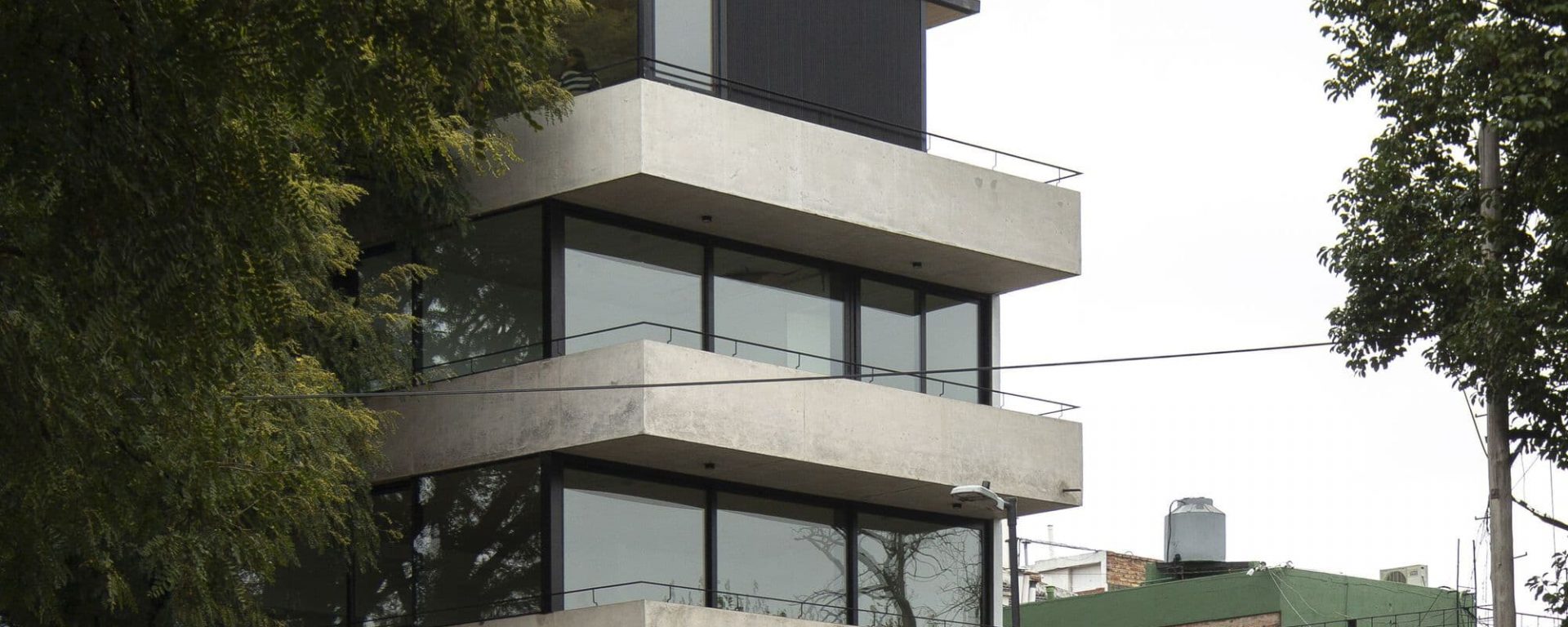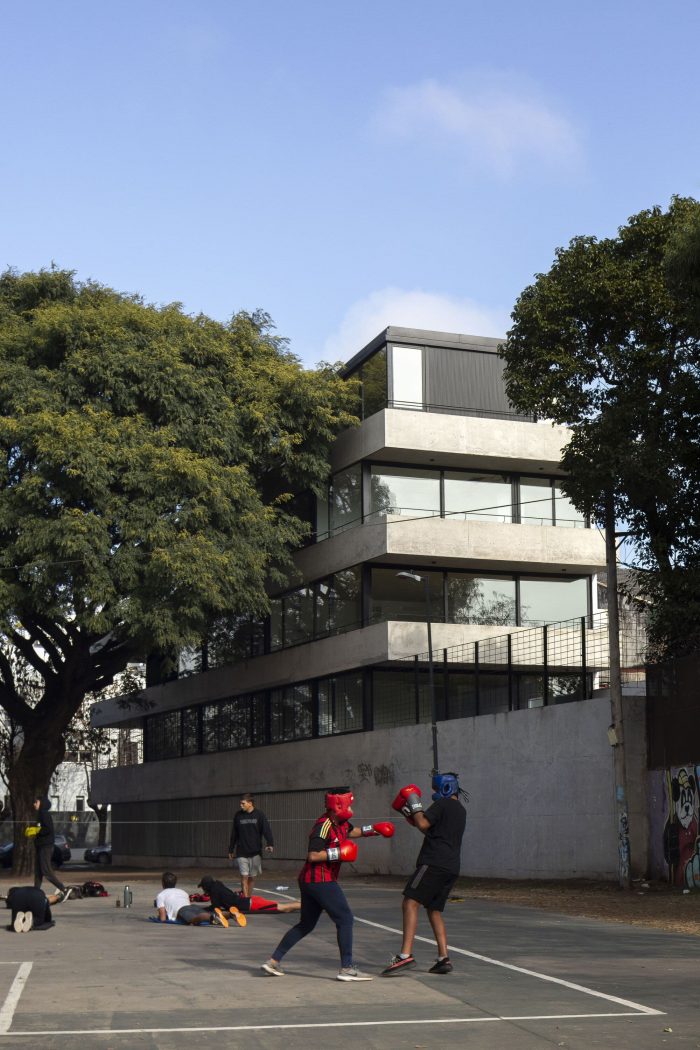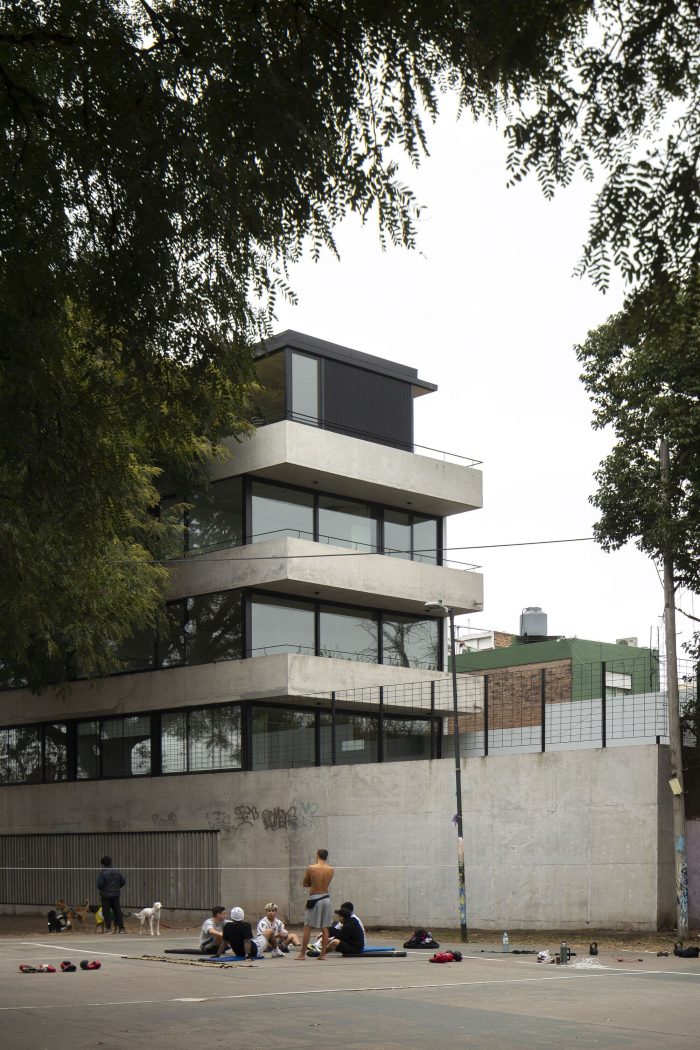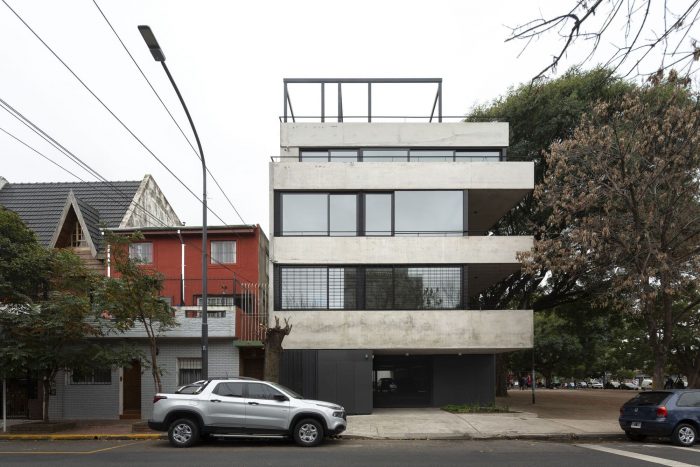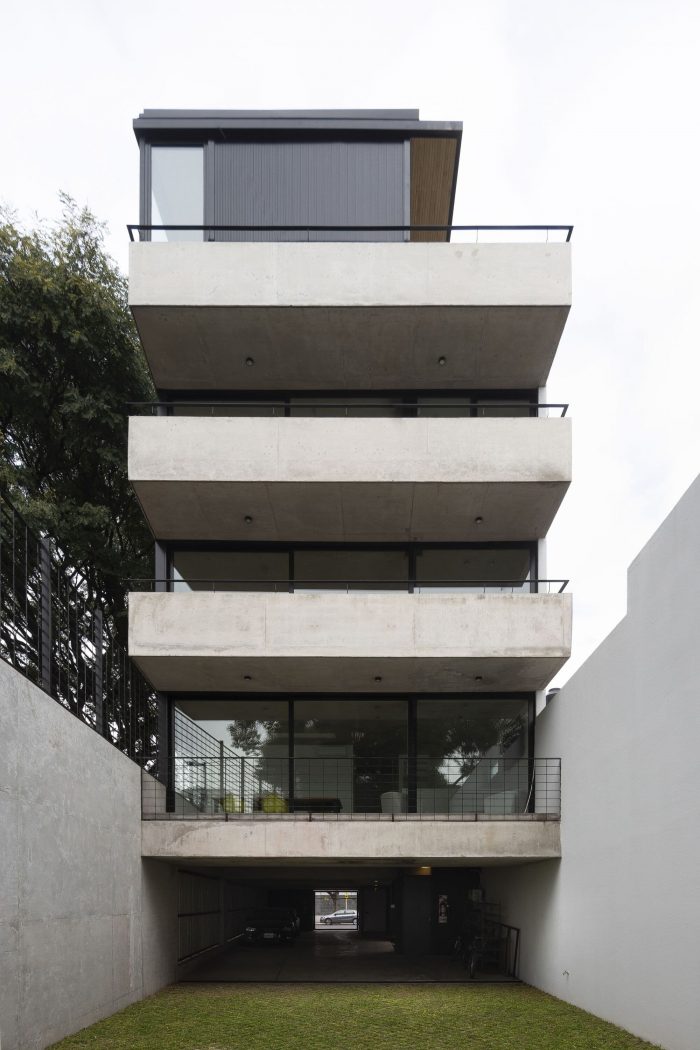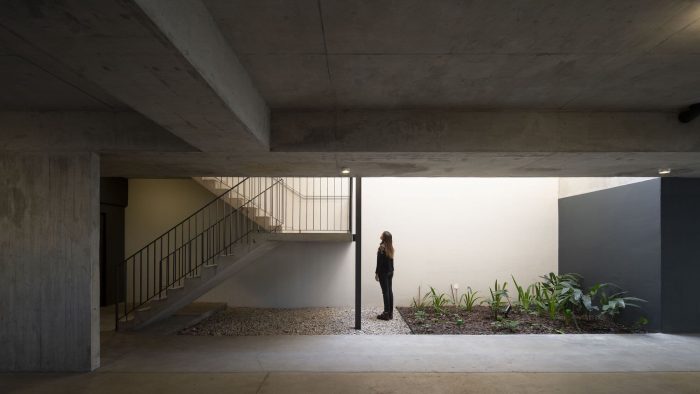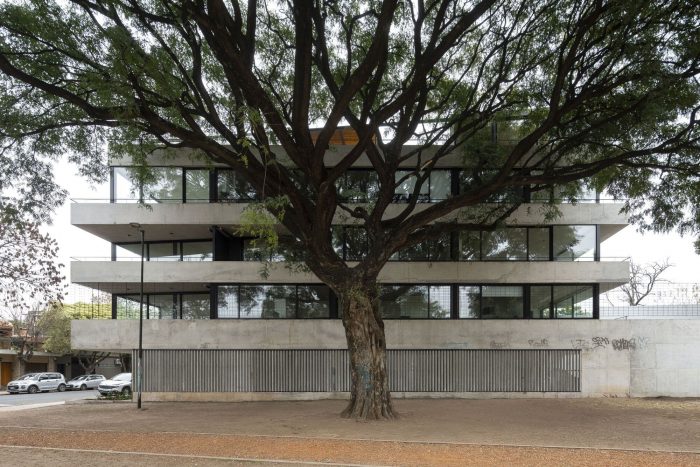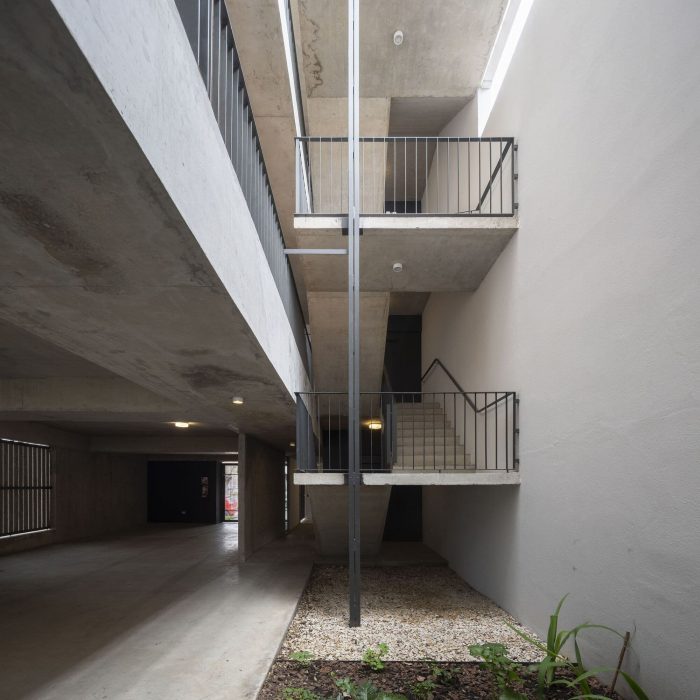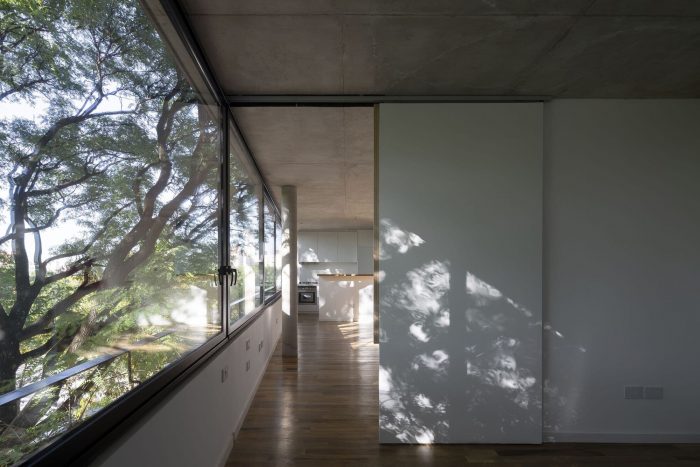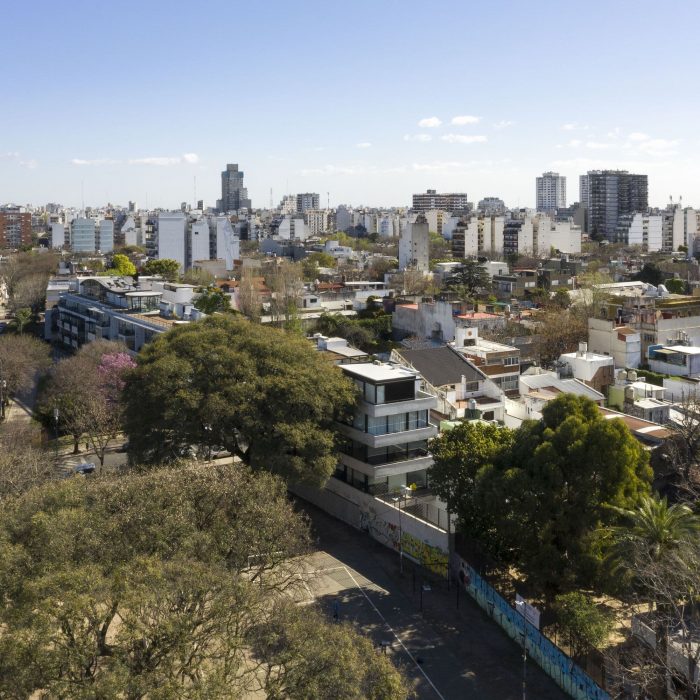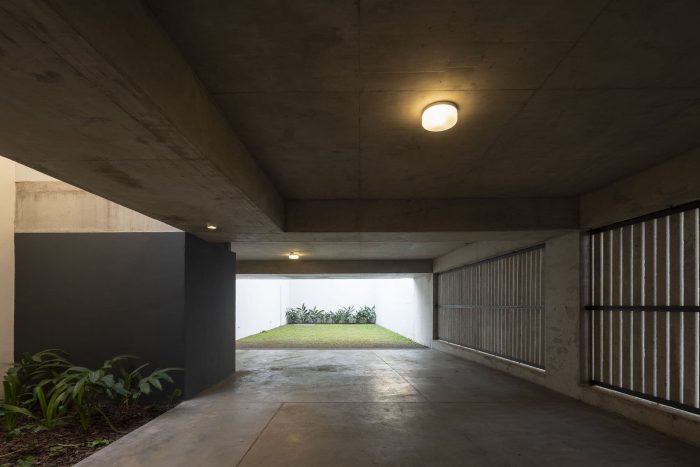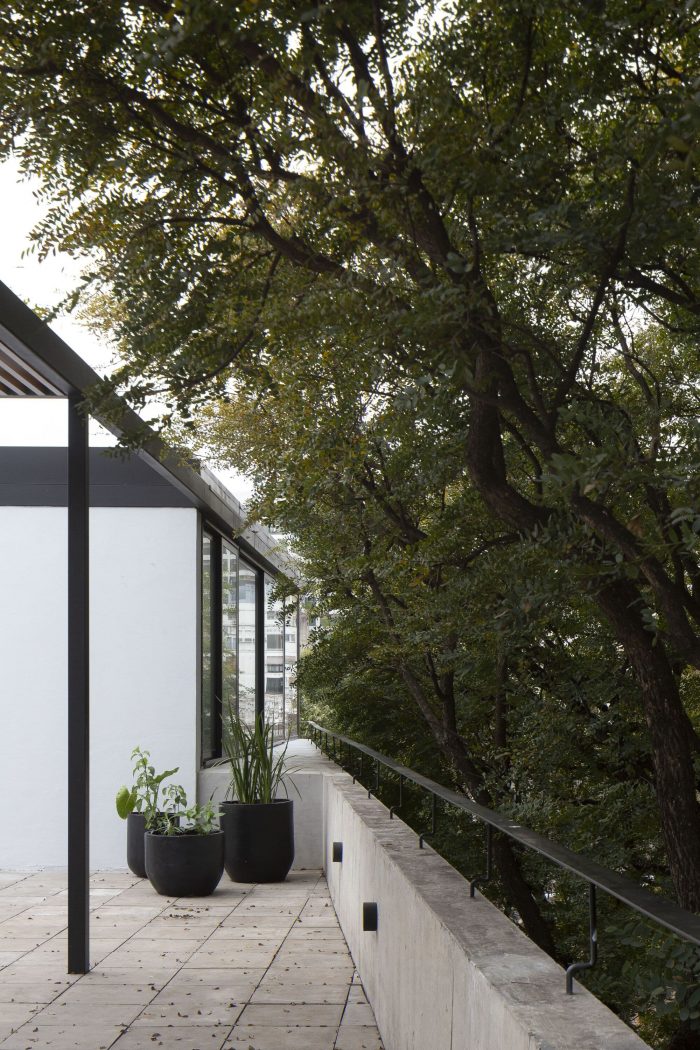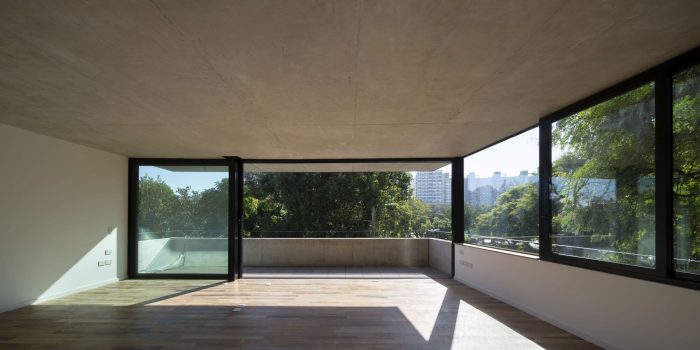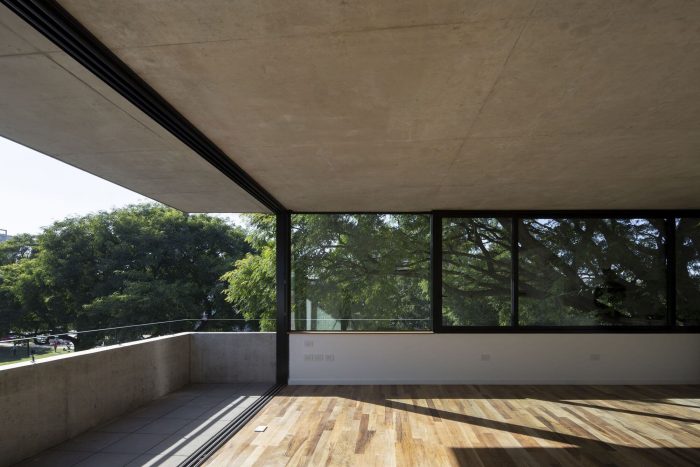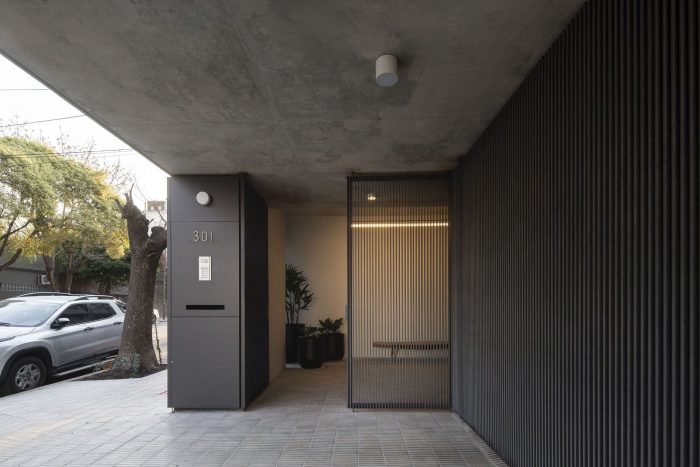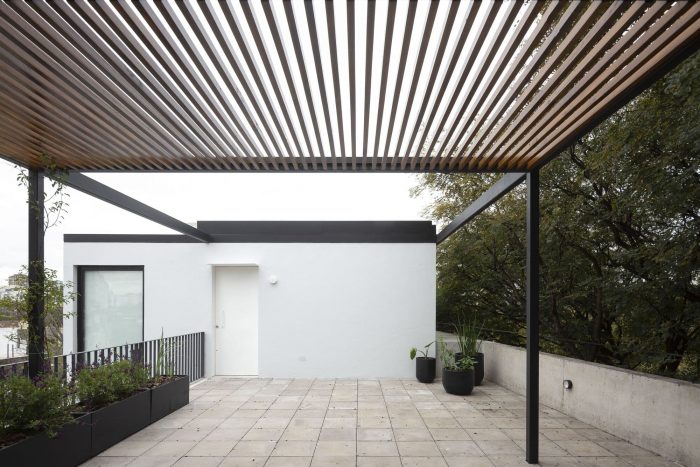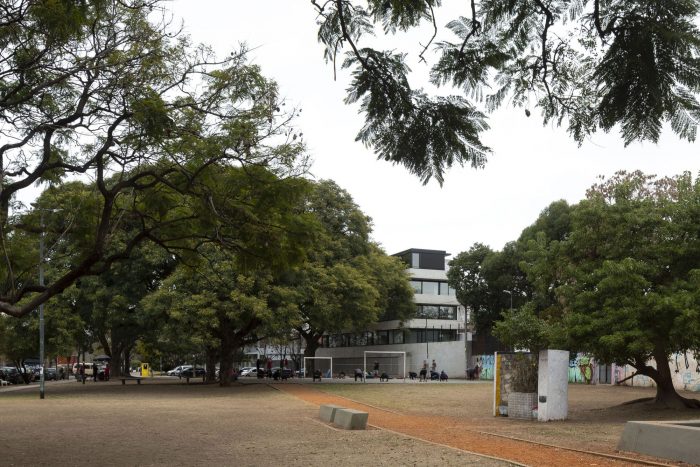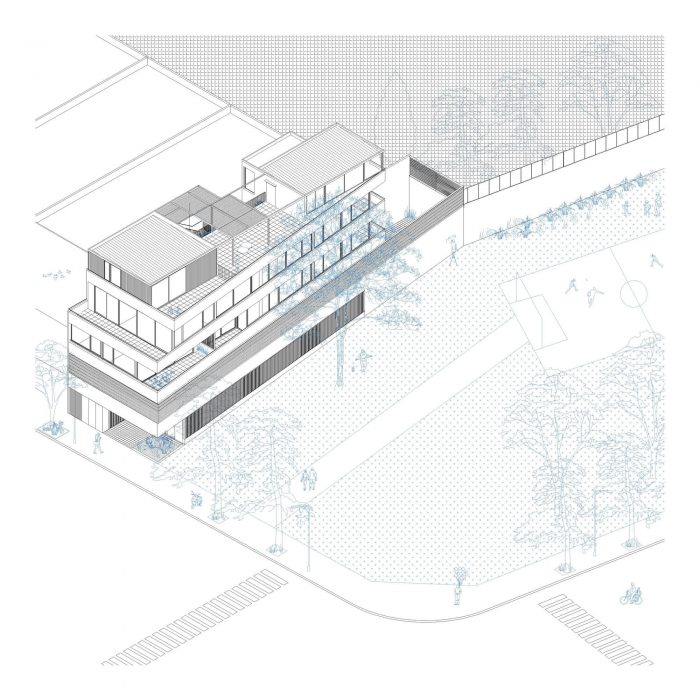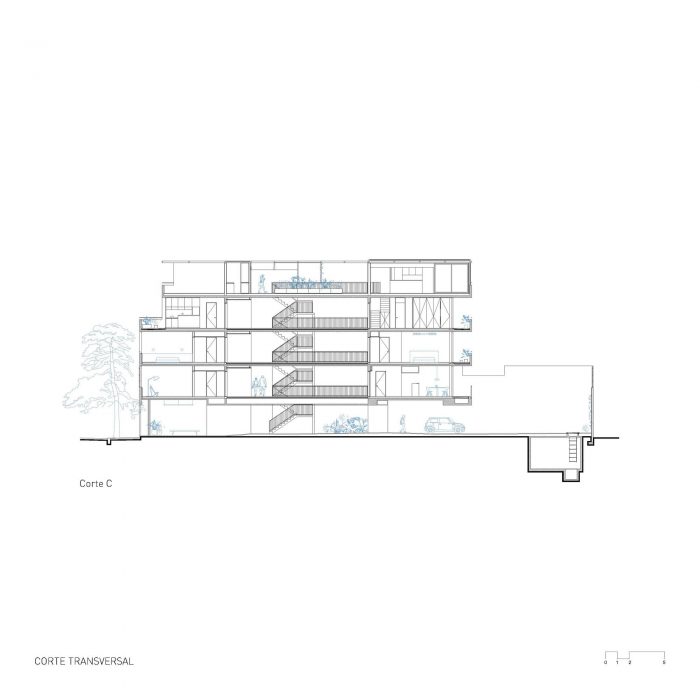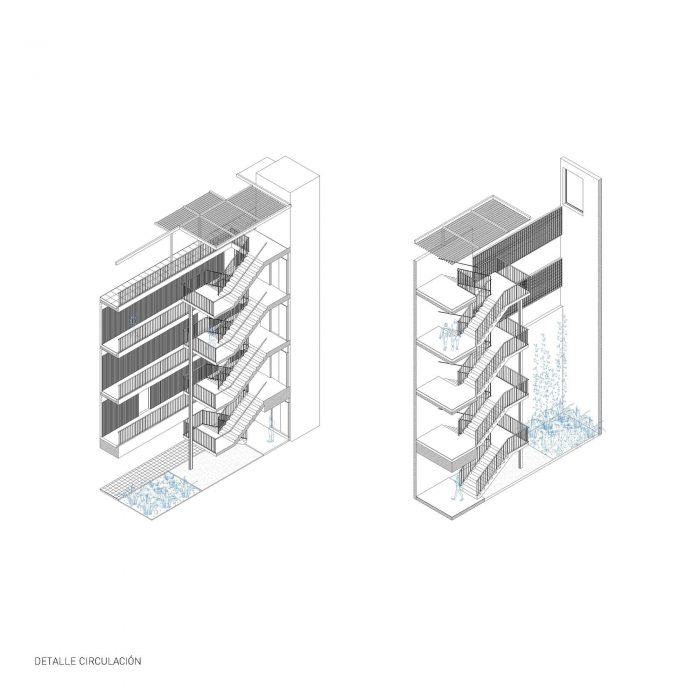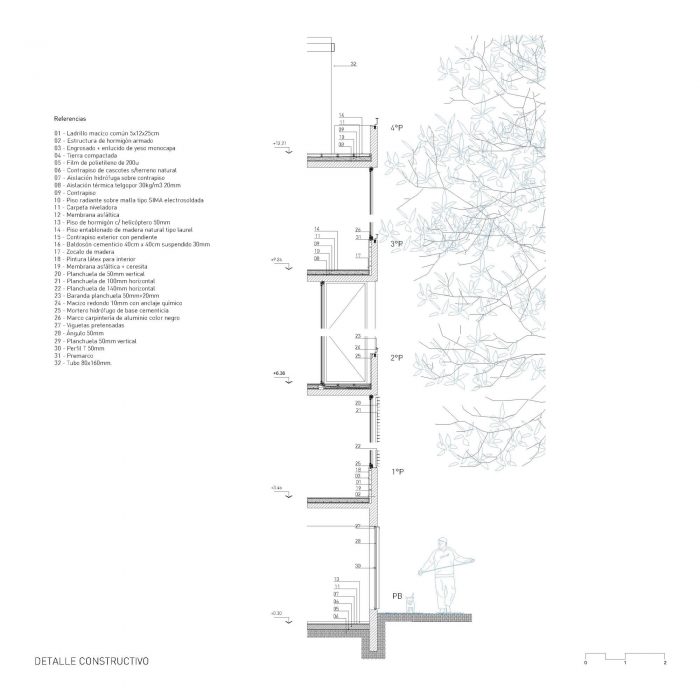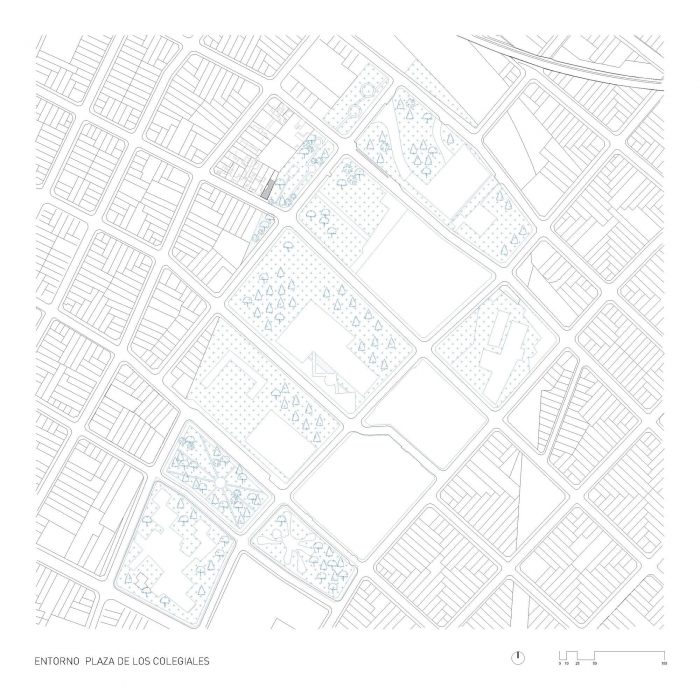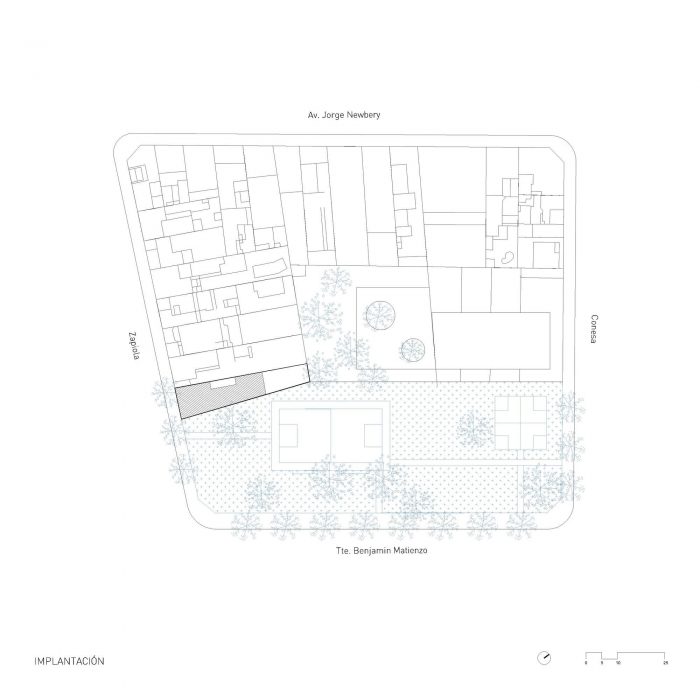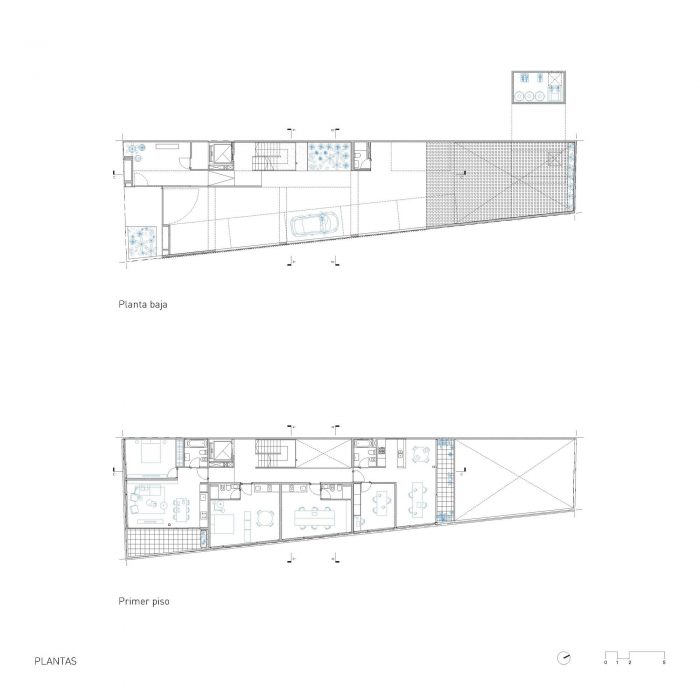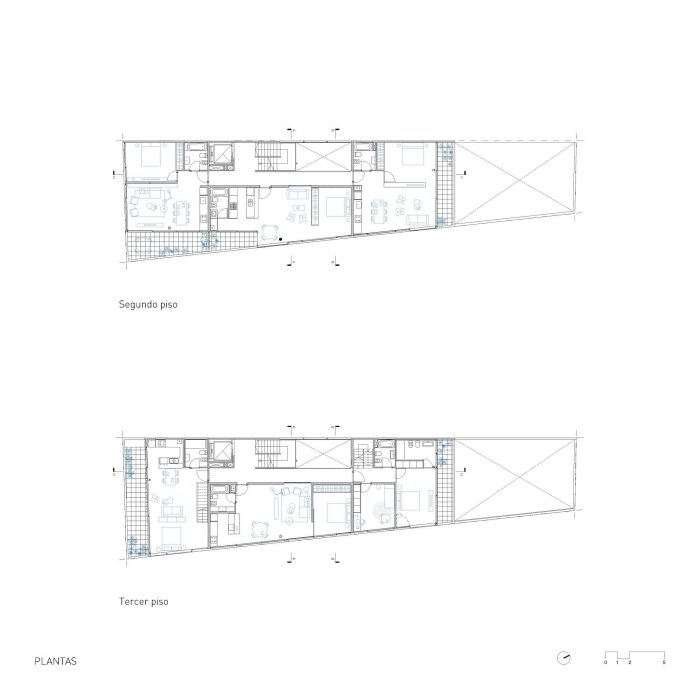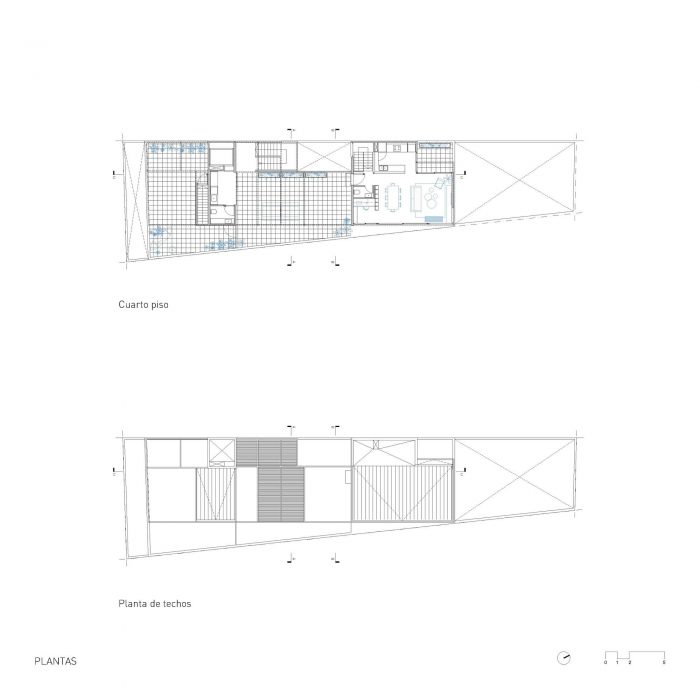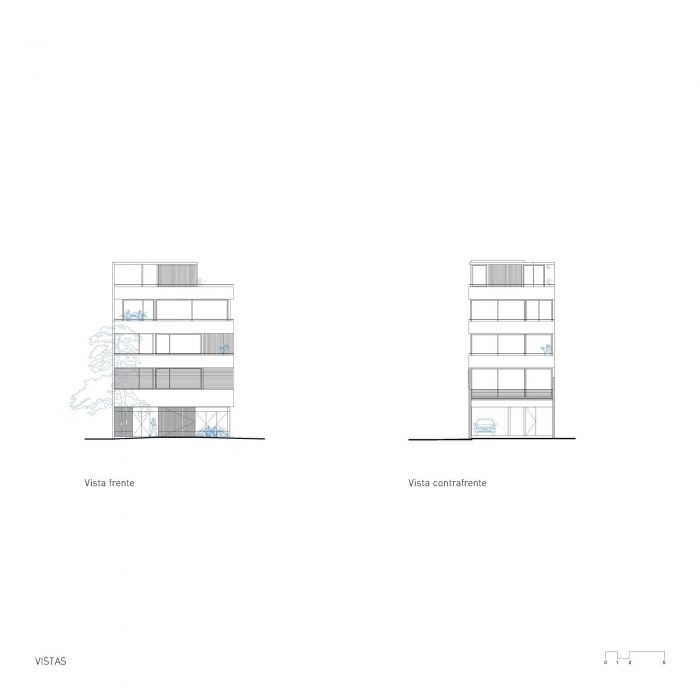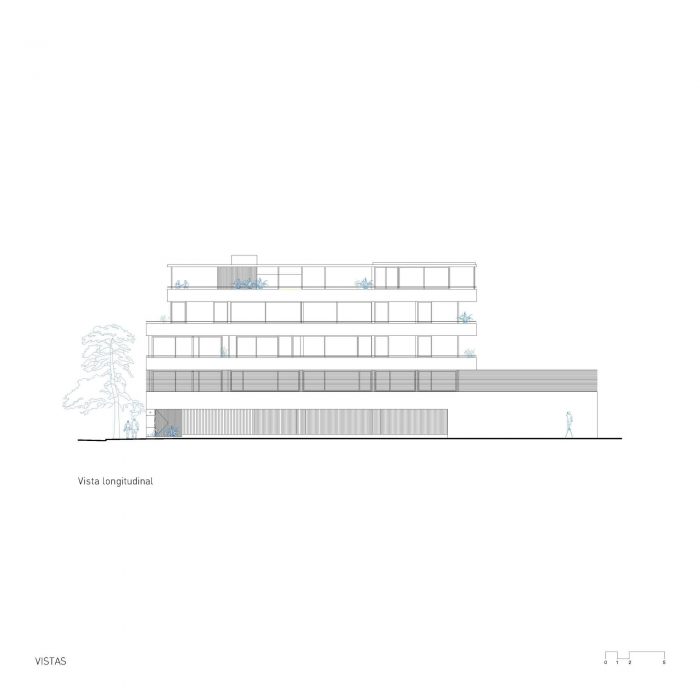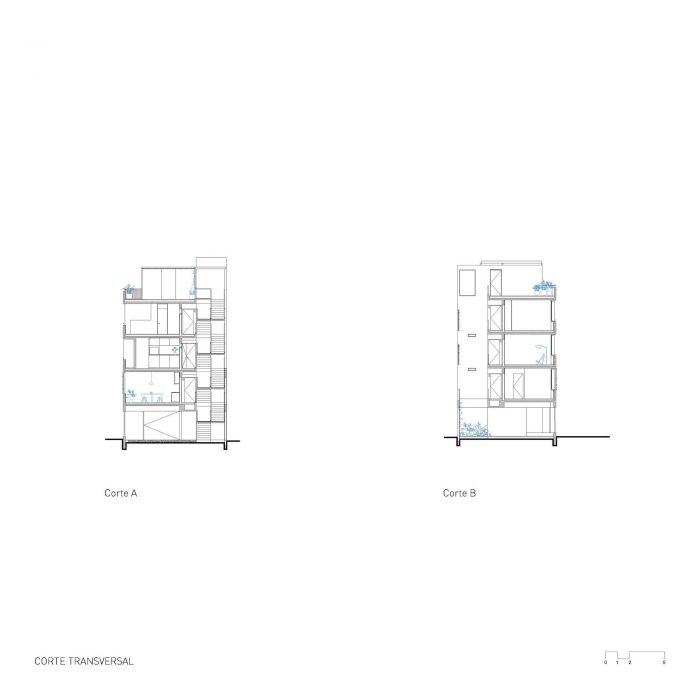Zapiola 301是一个有10个单元的公寓楼,位于布宜诺斯艾利斯的Colegiales社区。该项目位于Zapiola街上,与Plaza de Los Colegiales接壤,是Matienzo, Cramer, Álvarez Thomas和Dorrego街道之间的大型公园、广场和基础设施系统的一部分。这个巨大的城市空白作为巴勒莫、Colegiales、Belgrano和Chacarita社区之间的一个缓冲区。
Zapiola 301 is a ten-unit apartment building located in the Colegiales neighborhood, of Buenos Aires. The project is implanted on a lot with access through Zapiola street, bordering Plaza de Los Colegiales, which is part of a large system of parks, squares, and infrastructure between the streets Matienzo, Cramer, Álvarez Thomas, and Dorrego. This great urban void works as a buffer between the neighborhoods of Palermo, Colegiales, Belgrano, and Chacarita.
该建筑重新构成了沿Matienzo街的Colegiales社区结构的边缘建筑线,这些建筑大多是由中等密度的住房组成。该建筑正面向公园系统开放,这为在Zapiola街的车辆正面和朝向广场的一侧开发一个连续的立面提供了机会,那里有一棵大的Tipa树。这棵雄伟的树产生了公园和建筑立面的特征和微气候。
The building recomposes the line of buildings that act as the edge of the fabric of the Colegiales neighborhood along Matienzo Street, mostly made up of medium-density housing. This building front opens onto the park system, which raised the opportunity to develop a continuous facade on the vehicular front of Zapiola street and the side towards the plaza, where a large Tipa tree is located. This imposing tree generates the character and microclimate of both the park and the building’s facade.
朝向广场的立面、树和周边条件是勾勒项目的三个主要元素。该建筑是由连续的裸露钢筋混凝土条带发展起来的,其倒梁系统产生了室内和单元扩展的窗台。连续的木结构伴随着公园景观的水平性和长的视觉效果,Tipa树的杯子是其视觉景观和建筑环境调节器的主要特征。
The facade towards the square, the tree, and the peripheral condition were the three main elements that outlined the project. The building is developed in continuous strips of exposed reinforced concrete with an inverted beam system that generates the window sills for both the interiors and the expansions of the units. The continuous carpentry accompanies the horizontality and the long visuals of the landscape of the parks, with the cup of the Tipa tree as the main feature in its visual landscape and environmental regulator of the building.
在底层,建筑从官方路线上撤退,产生了一个大型的半遮盖的通道,与公园的大花坛相连。朝向广场的内部底层采用了预制桁架的可渗透外墙,允许光线进入并在公共空间和建筑底层之间产生视觉上的细微差别。
On the ground floor, the building retreats from the official line, generating a large semi-covered access linked to the park with a large flowerbed. The interior ground floor towards the square was treated with a permeable facade of precast joists that allow light to enter and generate a visual nuance between the public space and the ground floor of the building.
这些单元被组织成四层,核心部分和楼梯向线性庭院开放,靠在东北侧的党墙上,用木头包覆的循环向庭院开放。这些单元共享一个模块化和结构性的节奏,以不同的尺寸和类型构型开发。
The units were organized into four levels with the core and the staircase opening towards the linear courtyard, resting on the northeast party wall, with wood-clad circulations open to the courtyard. The units share a modular and structural rhythm, developed in different sizes and typological conformations.
该建筑的公共露台位于顶层,可以看到公园和街区的肺部。这个区域由一个综合服务区和一个金属和木材结构的凉棚组成。这个金属结构形成了建筑的复式。
The common terrace of the building is located on the top floor with views towards the park and the lung of the block. This sector is made up of a general services area and a pergola with a metal and wood structure. This metal structure forms the duplexes of the building.
Architects: Cabrera Pieretti Arquitectos, Cottet Iachetti Arquitectos
Area : 860 m²
Year : 2021
Photographs :Javier Agustín Rojas
Manufacturers : Huup, IDEA, Moltrasio, Roca Argentina, thin compact
Lead Architects : Carlos Cottet, Victoria Iachetti, Guillermo Cabrera, Jorge Pieretti
Collaborator : Cristian Jaume
Structural Calculation : Rodrigo Saura
Sanitary Facilities Advisor : Damián Saez (KPL Arquitectos)
Landscaping : Laura Trotti (Rolândia)
City : Colegiales
Country : Argentina

